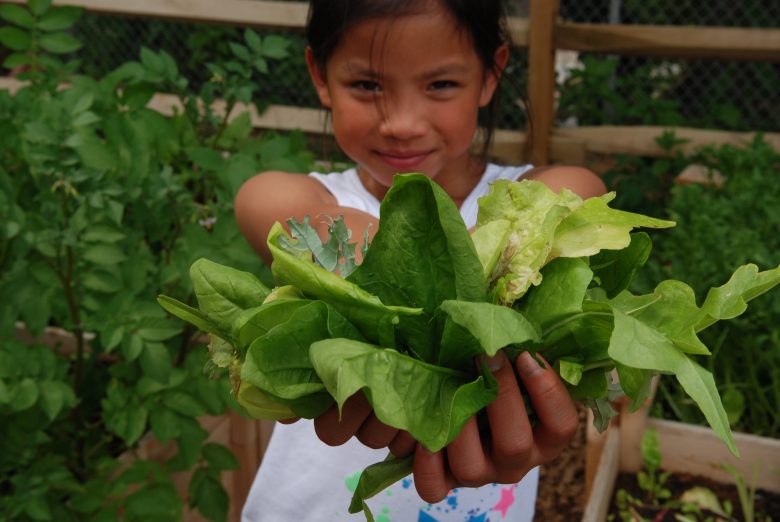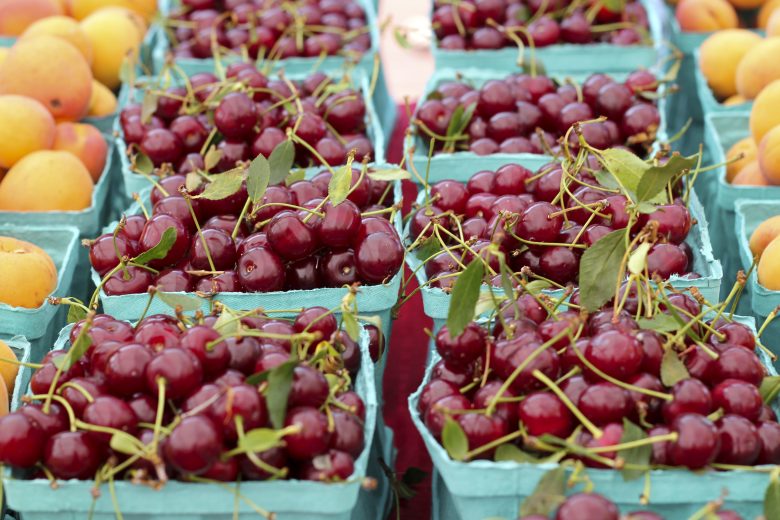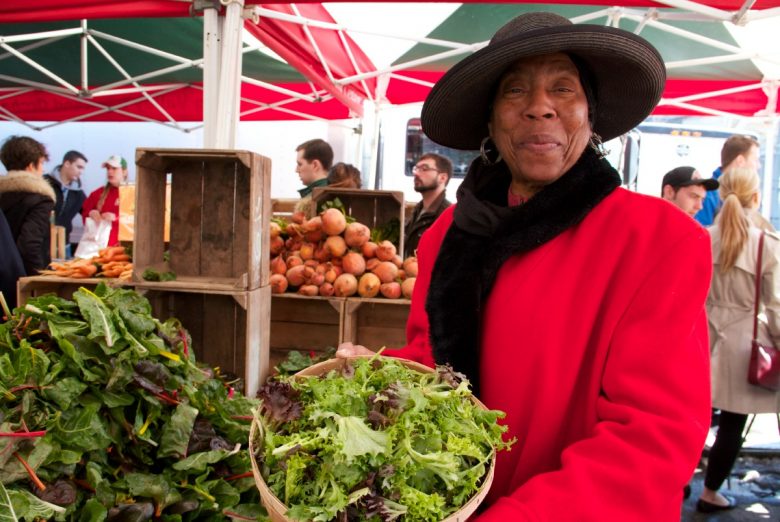By Sarah Sekula, Published in Green Living
When it comes to getting kids to eat their veggies, Lea Howe knows the trick: teach them to grow and harvest it themselves. They will become more connected to the radishes and carrots and kale are more likely to give it a taste. Better yet, teach them to cook an entire nutritious meal. Or, have them sell their delicious produce at a farmers market.
These are just a few examples of how DC Greens, a non-profit organization based in the nation’s capital, connects school-aged kids with their food.
“It’s important for children to visit farms to develop positive relationships with the environment and the food system at an early age,” says Howe, who serves as the farm to school director for DC Greens. “We’ve met seventh-graders who had never cracked an egg before, fifth-graders who didn’t recognize a beet and had the pleasure of watching third-graders eat raw sweet corn off the cob for the first time.”
With all the fast and convenient food options today, it’s easy to go through life with no understanding of where food comes from. That’s where Lauren Shweder Biel and Sarah Holway come in. Together, they started DC Greens in 2009 with lofty goals of bringing food education to every classroom, having doctors prescribe fresh fruits and vegetables and providing easy access to healthy foods.
Since then, they have certainly been walking the walk. They oversee a handful of farms tended by a slew of volunteers, including kids. The kids, in fact, morph into healthy-eating ambassadors themselves by selling their produce at weekday school garden markets. All those funds go straight back into the school farms program. And thanks to the Cooking with Kids initiative, the Cooking Corps engages students with seasonal ingredients to prepare healthy, affordable recipes while having a conversation on larger food system concepts.
Part of their focus also lies in conservation and sustainability. At the K Street Farm, a one-acre school garden, for example, cafeteria waste is composted to produce a rich fertilizer. Plus, a large rainwater harvesting system and drip irrigation work as a way to efficiently use water. Every detail is considered, right down to the insects (their vibrant pollinator gardens are designed to support honeybees and monarchs).
And it doesn’t end there. DC Greens’ reach extends far beyond the school system. One area of huge success is the Fruit and Vegetable Prescription program, FVRx, which was started by Wholesome Wave in 2010. Patients receive prescriptions from their doctors for free produce and fill those prescriptions at 53 participating farmacies (aka local farmers markets).
“The program reaches approximately 300 low-income DC residents each year who are struggling with chronic, diet-related illness, such as diabetes,” says Lillie Rosen, DC Greens’ food access director. “Access to fresh produce is a powerful tool for low-income community members to take control of their diets. About half of the participants had a reduction in their body mass index percentile. FVRx acts as a literal carrot encouraging patients with chronic illness to return to see their health care provider on a monthly basis.”
With such visible results, DC Greens’ work is certainly rewarding. “I’m eating better, the kids are eating better,” says Beatrice Evans, who uses the Produce Plus Program, which provides $10 per week to low-income customers to spend on farmers market produce. “This program has been a blessing.”
So much so, Evans is spreading the word. Every time she rides the bus, she tells her fellow commuters about the program and how she’s able to snatch up cucumbers, cabbage and collard greens and how they should, too. Just get there early. The farmers markets have gotten so popular, the line sometimes wraps around the block.
How do their gardens grow?
School gardens serve as a hands-on classroom. While getting dirt underneath their nails, kids are learning about teamwork and problem solving. Which begs the question? How do you expand the school-garden movement? Teach the teachers to become gardeners. DC Greens’ Growing Garden Teachers program does just that.
How does it work? More then 50 public and charter school educators attend monthly workshops led by local and national experts in the field.
Who benefits? The program has reached more than 10,000 students in every ward of the city.
The tools. Prior to GGT, garden coordinators worked in isolation, trying to figure out best practices on their own. DC Greens provides key resources (seeds, seedlings, interns, curricula) to keep the program going strong.



